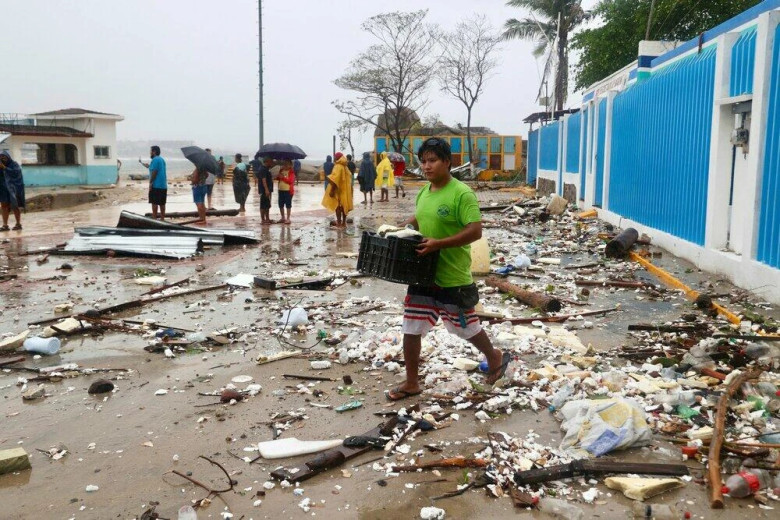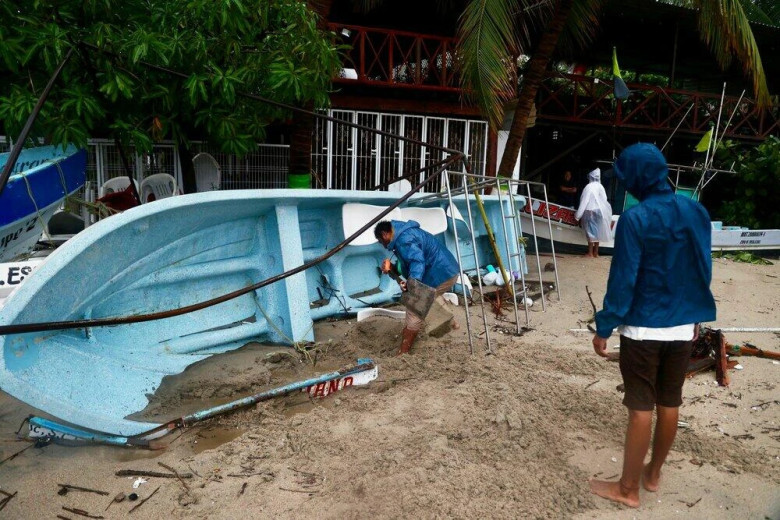Hurricane "Erick" Weakens as It Hits Mexico

Hurricane "Erick," once categorized as a dangerous Category 4 storm, made landfall on Mexico’s Pacific coast and has since lost much of its strength. However, as the storm downgraded to a tropical storm, it left behind a trail of destruction, including downed trees, toppled power poles, and significant landslides. According to the National Hurricane Center (NHC) in Miami, "Erick" reached land in the southwestern state of Oaxaca with wind speeds reaching 205 kilometers per hour. Even though the storm's winds have diminished, the accompanying heavy rainfall poses ongoing risks to affected areas.
Impact and Damage Report
The National Civil Protection Coordinator, Laura Velázquez, reported that the storm had triggered at least nine landslides on local highways, caused power outages, and resulted in flooding in various locations, including a hospital. Thankfully, initial reports indicate that there have been no fatalities in the impacted states of Guerrero and Oaxaca thus far.
Just before making landfall, "Erick" had downgraded from a Category 4 to a Category 3 hurricane, which the NHC previously labeled as "extremely dangerous." Despite this reduction, authorities are still urging caution as the storm moves inland, warning that the danger from severe rainfall persists.
Official Warnings and Safety Measures
In a daily press conference, Mexican President Claudia Sheinbaum emphasized the importance of remaining vigilant. Although "Erick" is expected to continue weakening, authorities have cautioned about the potential for severe wind damage and life-threatening flooding, particularly along the coastal area between popular tourist destinations Acapulco and Puerto Ángel, which remains under a high-risk advisory.
"This is not yet the time to let our guard down," Sheinbaum stressed, highlighting the need for people to take safety precautions seriously as the weather conditions evolve. With the infrastructure having already sustained damage, the focus must now turn to recovery efforts and ensuring the safety of local residents.
Climate Change Concerns
The 2023 hurricane season has already seen its fair share of extreme weather events. "Erick" is the second hurricane to impact the Pacific region this year following "Barbara." The hurricane season kicks off on May 15 in the Pacific and June 1 in the Atlantic, officially running until November 30.

Experts point to the increasing impacts of climate change as contributing to the rising likelihood of powerful storms. Last October, Hurricane "Otis," a Category 5 storm, wreaked havoc on Acapulco, claiming at least 52 lives and inflicting extensive damage. The link between global warming and the severity of tropical storms has become an area of growing concern, calling for more robust disaster preparedness and response measures.
Preparedness for Future Storms
As Mexico continues to grapple with the aftermath of "Erick," the need for improved infrastructure and disaster response systems is evident. Authorities stress that communities must prepare for potential future storms, likely exacerbated by climate change. The experience with both "Otis" and "Erick" illuminates the urgent need for proactive measures to protect lives and property.
Citizens are encouraged to stay informed by following weather updates and heeding advisories from local authorities. With the possibility of more storms ahead, the significance of collective awareness and preparedness cannot be overstated. As residents of coastal regions brace for potential threats, the lessons learned from "Erick" will likely shape future approaches to disaster management in Mexico.















Comments
0 comment